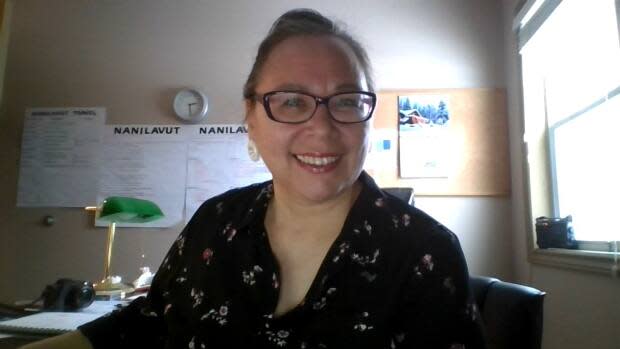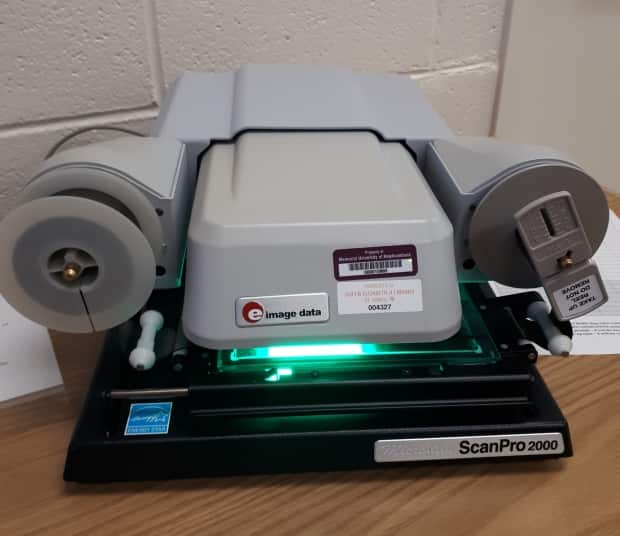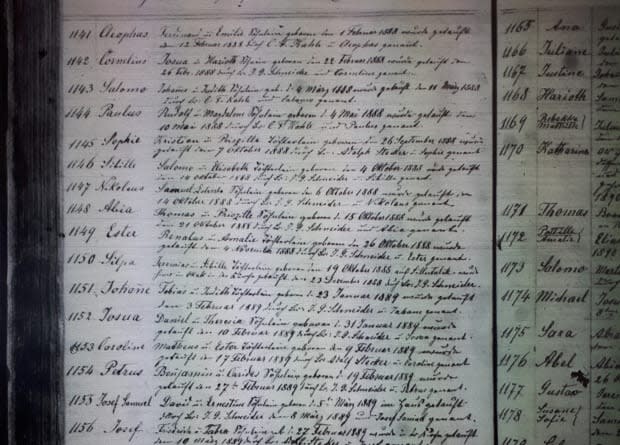New program finds the gravesites of Inuit who left Labrador for TB treatment — and never came home

Searching through church and archival records to locate gravesites is not an easy task, but it's one that Cathy Ford of Makkovik puts her heart and soul into.
Nanilavut, a word that means "let us find them" in the Nunavut dialect, is an initiative that looks for gravesites of people who died of tuberculosis from 1940 to 1960, when the disease was widespread across Inuit Nunangat and thousands of Inuit across Canada had to leave their home communities for treatment.
"People had to leave. They were picked up by ships or sent, as far as I know, on a military plane too and just the regular aircrafts," said Cathy Ford, one of five project managers across Nunangat, each focusing on their home region.
Ford, the project manager for Nunatsiavut, works to find the gravesites of Nunatsiavummiut who travelled to larger hospitals and sanatoriums in places including Cartwright, North West River, Happy Valley-Goose Bay, St. John's and Mary's Harbour for tuberculosis treatment and did not return home.
Ford is one of the people in Nunatsiavut who has a family member who went away for tuberculosis treatment and did not return home. Her grandfather is buried in St. Anthony, on Newfoundland's Northern Peninsula. He died in November one year, and back then "there was no way that time of year to send them back," she said.
The challenges of searching records
The types of requests that Ford receives through Nanilavut vary. Some families know the community where their loved ones are buried but there is no paper record and the grave is no longer marked.
Ford has also received requests where families do not know where their loved ones are buried, how they died or what year they died, though those ones are rare.
Complicating matters is the gap between when someone died and when their families were informed.
"It wasn't right away that they got this news," said Ford.
And even though some records of these events exist, finding them now can be difficult.

"The Moravian church was really good at record keeping, the other denominations not so much," said Ford.
She looks through obituaries, websites, archives at The Rooms museum and Them Days magazine, books, and even on social media. Ford has been working with the provincial vital statistics division, which has an online database that anyone can access, the records end in 1949.
"The inquires that I have and are unable to locate, I'm thinking maybe they're on later years, that's not microfilmed yet," said Ford, who said the division has been very helpful.
"They know this process takes a while.… I've sent them my list and they've come back with a few records," she said. "The Department of Vital Statistics have really stepped up and has been helping. That's a huge, huge deal."
'I can't help but get emotional'
Ford knows the work she's doing is important to Nunatsiavummiut; not everyone can travel to Memorial University and there are people searching for answers who don't know where to look, she said.
When she does a presentation on the initiative, "people are so genuine," she said.
"They're listening and they want to know more about it and they say, 'Thank you, thank you for doing this work. This work is so important to us.' They may not be looking for someone, but they know of family members in the community who are. It's very meaningful work."
Being from Nunatsiavut, this work has an impact on Ford herself.
"I can't help but get emotional because I know, like, these are like my people," she said.
A couple of summers ago, she was looking for records on microfilm of Moravian Church books — baptisms, confirmations, marriages, deaths.
"You could follow a person through all of those stages in those Moravian books," she said. "I was sitting at Memorial University, at the desk, looking at the microfilm screen … tears coming down my eyes because these are my people."
It wasn't only being sent away for tuberculosis treatments that Nunatsiavummiut weren't enduring just being sent away for tuberculosis treatments at the time; they were also being taken from their communities and sent to residential schools during the same era.
"Once their treatment is done… they're not coming back to their hometown of Hebron or Okak because while they were away for treatment, relocation happened. There's all these, you know, stressful, traumatic times for Inuit who have experienced these things all at the same time," she said.
"Tuberculosis treatment, relocation, residential schools, all those things. It wasn't just one event; it was all of those things happening at the same time to the same people, the same few years, to the same family.… Those things weren't taken lightly."
While there are still open requests that Ford is working on, there are success stories. Once gravesites are found, Nanilavut enables two family members to travel to the gravesites. As the snow has melted and COVID-19 travel restrictions are easing, two families will soon be travelling to the gravesites of loved ones to say their goodbyes.
"When I get off the phone and tell a family member that we just got news that 'your father was found' or 'your grandmother was found' [it's] so, so emotional because they have been searching and years and years," she said.
"When you have a success story in the office, man, it's [a] huge, huge deal and a weight lifted off your shoulders, it's so satisfying and emotional, and that's a good day in the office."

Starting this fall, communities in Nunatsiavut will hold events — as will communities in the other regions of Inuit Nunangat, and across Canada — to commemorate the people who did not return home for burial, with Nunatsiavummiuit-designed monuments and plaques.
People outside Nunatsiavut in Labrador were commonly removed from their home communities for tuberculosis treatment as well.
Rod Pardy of Cartwright told CBC News he became sick shortly after he was born, in November 1957. The following February, when ice conditions allowed, he went to Cartwright by dog team and was later sent by plane to St. Anthony, where he was diagnosed with tuberculosis. When Pardy recovered in July 1959, he says, the "people in charge" did not want him to return home.
"The only reason I was able to come back was because my mother [fought] for me to come home. They wanted to keep me," he said. A woman working with the doctor wanted to take Pardy to England, he said, and his mother was told that even if he survived tuberculosis, he "probably would be like a vegetable," he said.
"Mother said that she wanted me back anyway," he said. "My mother fought and fought and [they] decided to send me back home."

 Yahoo Finance
Yahoo Finance 